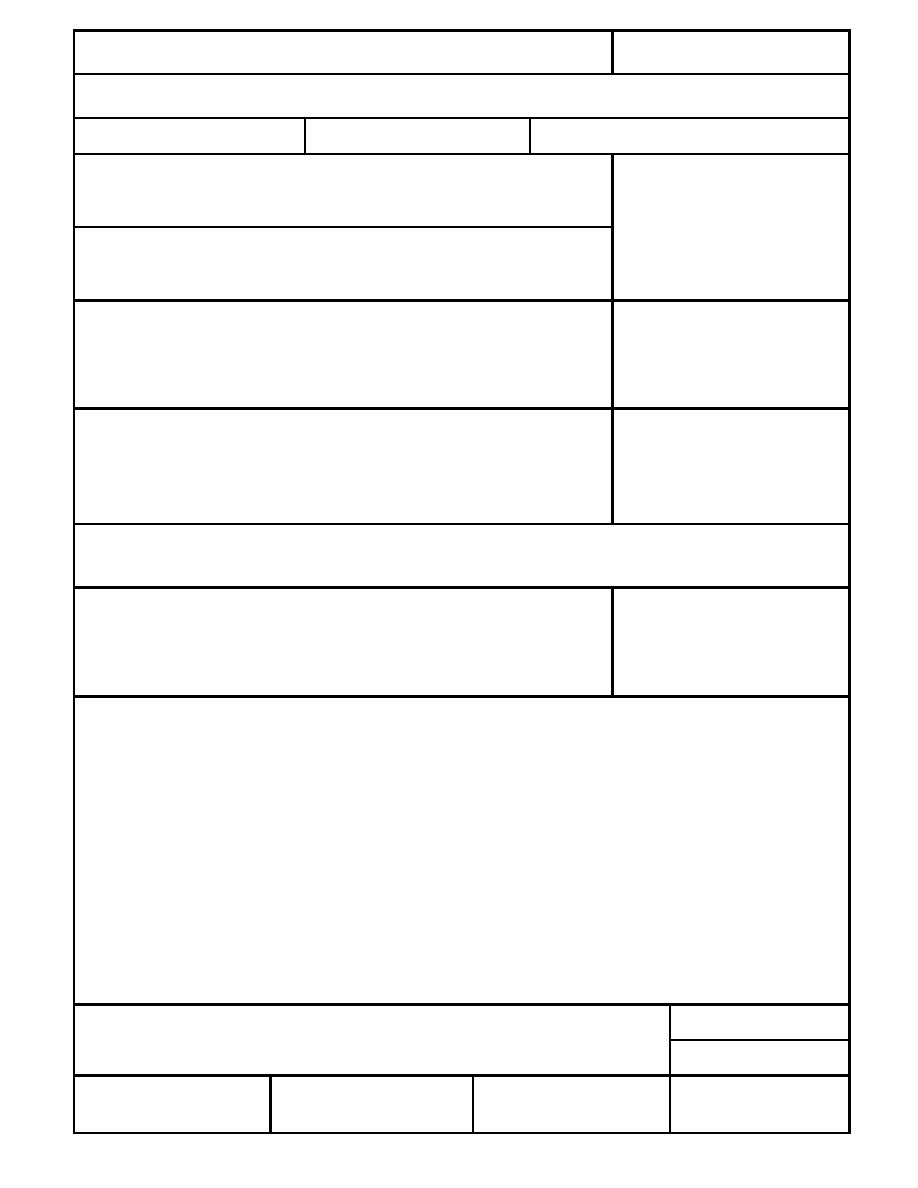
Form Approved
REPORT DOCUMENTATION PAGE
OMB No. 0704-0188
Public reporting burden for this collection of information is estimated to average 1 hour per response, including the time for reviewing instructions, searching existing data sources, gathering and
maintaining the data needed, and completing and reviewing the collection of information. Send comments regarding this burden estimate or any other aspect of this collection of information,
including suggestion for reducing this burden, to Washington Headquarters Services, Directorate for Information Operations and Reports, 1215 Jefferson Davis Highway, Suite 1204, Arlington,
VA 22202-4302, and to the Office of Management and Budget, Paperwork Reduction Project (0704-0188), Washington, DC 20503.
1. AGENCY USE ONLY (Leave blank)
2. REPORT DATE
3. REPORT TYPE AND DATES COVERED
January 1995
4. TITLE AND SUBTITLE
5. FUNDING NUMBERS
Collaborative Study of Soils Spiked with Volatile Organic Compounds
6. AUTHORS
Alan D. Hewitt and Clarence L. Grant
7. PERFORMING ORGANIZATION NAME(S) AND ADDRESS(ES)
8. PERFORMING ORGANIZATION
REPORT NUMBER
U.S. Army Cold Regions Research and Engineering Laboratory
72 Lyme Road
Special Report 95-3
Hanover, New Hampshire 03755-1290
9. SPONSORING/MONITORING AGENCY NAME(S) AND ADDRESS(ES)
10. SPONSORING/MONITORING
AGENCY REPORT NUMBER
U.S. Army Environmental Center
Aberdeen Proving Ground, Maryland
SFIM-AEC-ET-CR-94123
11. SUPPLEMENTARY NOTES
For conversion of SI units to non-SI units of measurement consult Standard Practice for Use of the International System of Units (SI),
ASTM Standard E380-93, published by the American Society for Testing and Materials, 1916 Race St., Philadelphia, Pa. 19103.
12a. DISTRIBUTION/AVAILABILITY STATEMENT
12b. DISTRIBUTION CODE
Approved for public release; distribution is unlimited.
Available from NTIS, Springfield, Virginia 22161.
13. ABSTRACT (Maximum 200 words)
Vapor fortification is a method of spiking soils with volatile organic compounds (VOCs) that was recently devel-
oped for producing materials suitable for performance evaluation and quality assurance/quality control (QA/
QC). Using this treatment method, soil subsamples enclosed in heat-sealed glass ampoules were distributed to 16
laboratories for a collaborative round-robin study. The sample sets consisted of duplicates of three different soils.
Each soil subsample had been vapor-fortified with the following VOCs: trans-1,2-dichloroethylene (TDCE), tri-
chloroethylene (TCE), benzene (Ben) and toluene (Tol). The laboratories were requested to report analyte concen-
tration estimates for these four analytes and any other detected organic compounds after performing a methanol
extraction, purge-and-trap gas chromatography, mass spectrometry analysis. The results from the 12 laboratories
that met all of the design criteria produced a range of relative standard deviations from 8.5 to 28.2%, with a
pooled standard deviation of less than 13%. The smallest range of consensus values was for Ben (pooled RSD =
9.0%), while the determination of TDCE showed the greatest overall uncertainty (pooled RSD = 20.3%). This
round-robin effort confirmed that the use of vapor-fortified soils sealed in glass ampoules is a precise way of
preparing and storing VOC-spiked soil subsamples.
14. SUBJECT TERMS
15. NUMBER OF PAGES
14
Hazardous waste
Vapor fortification
16. PRICE CODE
Quality control
Volatile organic compounds
17. SECURITY CLASSIFICATION
18. SECURITY CLASSIFICATION
19. SECURITY CLASSIFICATION
20. LIMITATION OF ABSTRACT
OF REPORT
OF THIS PAGE
OF ABSTRACT
UNCLASSIFIED
UNCLASSIFIED
UNCLASSIFIED
UL
Standard Form 298 (Rev. 2-89)
NSN 7540-01-280-5500
Prescribed by ANSI Std. Z39-18
298-102




 Previous Page
Previous Page
